From dirty slum to rainbow village: An Indonesian community transformed
Turning a slum into the bold icon of a city is an ambitious goal. In Indonesia's east, an injection of cash and some South American inspiration has transformed one community into a rainbow village with a bright future.
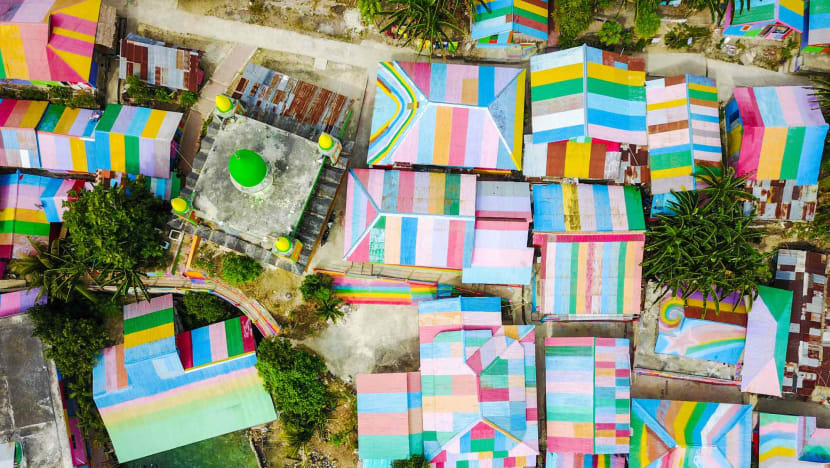
The colourful roofs of Kampung Pelangi seen from the air. (Photo: Jack Board)
TUAL, Indonesia: Turning a slum, with its challenging living conditions, into the bold icon of a city is an ambitious goal.
The Tetrew village for years was a glaring eyesore in Tual, a small city on the remote island of Kei Kecil in Indonesia’s far east.
Tetrew was a heaving mess: A mottled maze of filth and disrepair. And it stood at the physical gateway of the city, sprawled on a rising hill in front of the waterside where an arched bridge ushers in traffic.
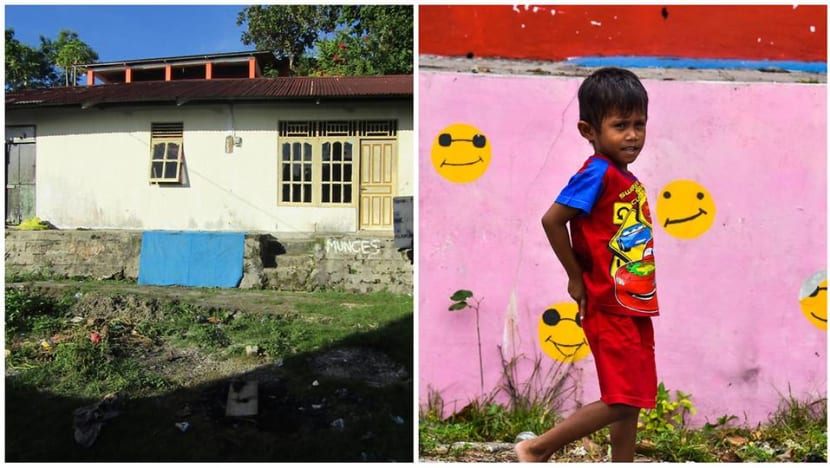
The sight of poverty was the first thing to greet any visitor to Tual.
Muzni Difinubun, now a community leader, was one of Tetrew’s first residents and has lived here since 1986. “This neighbourhood was very dirty back then. The people living here were very poor,” he said. “You would hurt your eyes just by seeing these slums.”
Last year, an injection of cash, some South American inspiration and a consensus that action should be taken, has seen the village’s grimy days painted away.

Over four months, creative murals, street art and unabashed colour has spilled through the streets and onto the walls of the Tetrew - now called Kampung Pelangi, or Rainbow Village.
With its new name comes a brighter existence for hundreds of families.
Nearly every surface is adorned with artistic creations. Even from the air, the painted roofs look magnificent. Many of the village’s young people are the ones responsible for the designs and execution of the artwork, adding ownership to the transformation.

“After changes like this, people feel more comfortable. The other thing is that they became very proud, because now tourists from outside can visit their village and know their neighborhood,” Muzni said.
“I think it’s safer now. The kids can play freely in this neighborhood. They look happier to play here after the government fixed the pathways. So we are very lucky.”

The colourful renovation of the village is more than just aesthetic. Authorities and community members have set out to make wholesale and meaningful change to the lives of residents.
As part of the upgrades, houses in the village were assessed and improved and repaired. Necessary infrastructure is also being rolled out, like waste disposal, road connections and clean water.
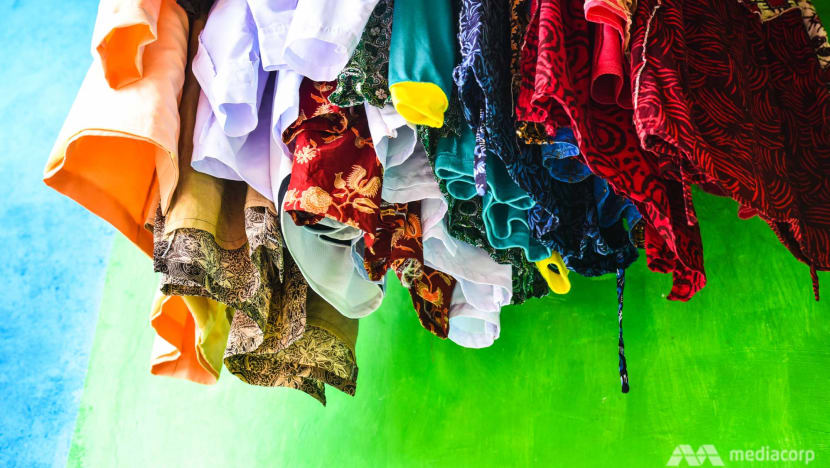
In the age of Instagram, attracting tourists - still a new phenomenon in isolated Maluku - is a key priority for the local government, which funded this IDR2 billion (US$134,000) project.
“We want Tual to have something different,” said Abdul Hakim Bugia, the head of the housing and settlement division of the Tual city government.
“Because it's in eastern Indonesia, things like this don't exist yet. Tual wants to create a new icon in eastern Indonesia.”
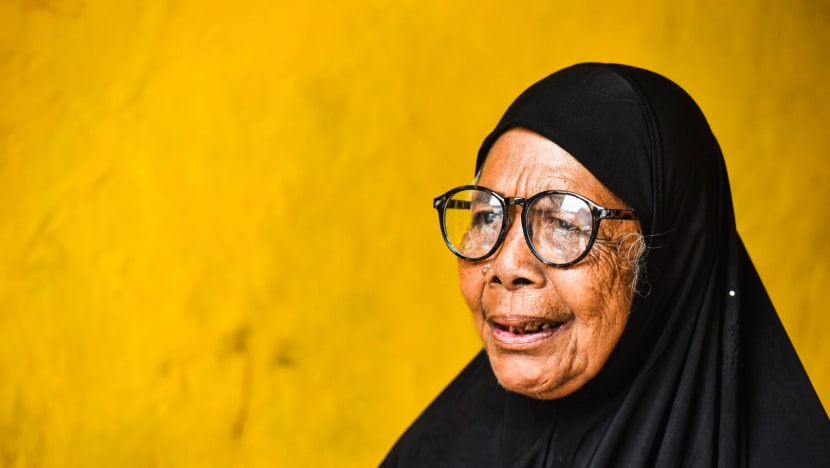
He says he has seen this type of rejuvenation project work successfully in Malang in Java, as well as in Brazil, and hopes Kampung Pelangi can be used to complement the island’s stunning beaches, waterfalls and reefs.
Having tourists - from Indonesia and overseas - walking through the neighbourhood remains a strange concept for the fishermen, teachers and farmers here, but one they are embracing. New small businesses and a cafe have recently opened to take advantage of the visitors.
“Before this village was painted colorful, it was so bad,” said Rini, a resident of 18 years. “But now so many tourists, even the foreign ones visit us here. We are so happy. Because it’s very beautiful now. That's why so many people come here.”
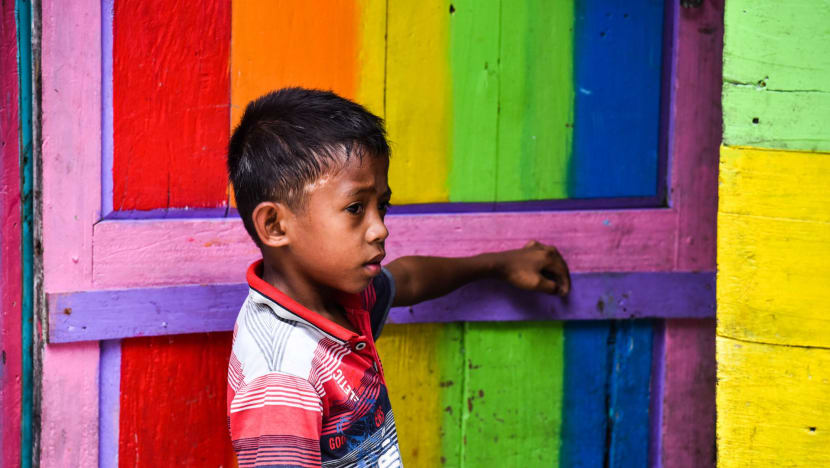
There are already looming challenges for maintaining the living standards inside Kampung Pelangi, particularly around trash and hygiene. But the dignity that has been garnered among residents may prove to be a catalyst for longer-term change on the winding alleys now laced with more optimism than ever before.
“I hope the residents can take a good care of this neighborhood. If there’s something broken, people can fix it right away so it can still look beautiful,” Muzni said.
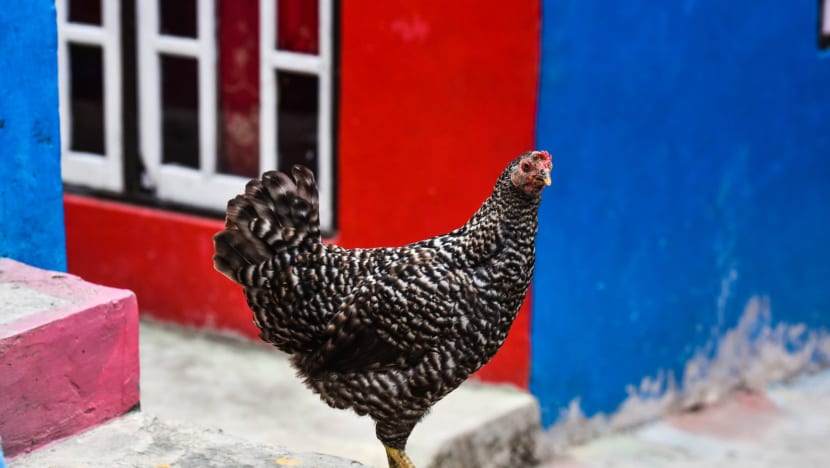
“We admit that the awareness of the villagers is still not good enough. So we as a government must continue to give them the spirit to preserve the rainbow village,” Abdul Hakim Bugia said.
The neighbouring village to Kampung Pelangi has also been made over in red and white paint - dubbed Kampung Merah Puti - and designed as a walk through Indonesian history featuring street art of former presidents and national heroes.
These are early moments in Tual’s attempts at community revitalisation, but from all angles, this is a vibrant start.














